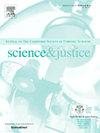国产硝酸铵炸药自燃自爆原因分析
IF 2
4区 医学
Q2 MEDICINE, LEGAL
引用次数: 0
摘要
随着对工业炸药的严格管制,由于原料易得、制备方法简单,自制炸药特别是硝酸铵类自制炸药被犯罪分子和恐怖分子广泛制造、销售和使用。含有化学改性硝铵的肥料常用于生产AN- hmes。为了提高爆炸威力和灵敏度,犯罪分子通常在这些肥料中加入高能量物质,如氯酸钾(KClO3)。然而,由于所添加物质的不相容性,经常发生自燃和自爆。这种自燃和自爆的研究比火灾或可燃材料引发的爆炸更困难,因为它们通常是在没有外部热源的储存过程中自然发生的。因此,对犯罪现场遗留爆炸物的成分分析对随后的犯罪重建具有重要的法医价值。然而,诸如晶相、热性能、炸药混合物中的组分相容性以及形成的中间体等因素往往被忽视。在本研究中,研究了an - hmes与KClO3非法混合引起的储存爆炸。分析了爆炸残留物的组成,并在开放和封闭条件下进行了模拟储存实验。在贮存实验中对炸药混合物的相组成、热稳定性和相容性进行了测试,以阐明自燃和自爆的机理。此外,试图解释为什么添加到肥料中的特征ClO3−离子没有在残留物中检测到。结果表明,尽管AN和KClO3单独具有热稳定性,但它们的混合降低了AN的热稳定性,显示出它们的不相容性。结果表明,在室温和密闭储存条件下,AN和KClO3可以形成不稳定的中间体氯酸铵(NH4ClO3)。随后,合成了NH4ClO3,对其进行了表征,并通过Rietveld细化分析了其晶体结构。NH4ClO3在58°C时分解,释放出在炸药内部积累的热量并形成热点,从而引发爆炸。由于分解产物为气态,在爆炸残留物中未检测到ClO3−。本文章由计算机程序翻译,如有差异,请以英文原文为准。
Cause analysis of spontaneous combustion and self-detonation of homemade ammonium nitrate explosives
With the strict control of industrial explosives, the easy accessibility of raw materials and simple preparation methods have made homemade explosives (HMEs), especially ammonium nitrate (AN)-based HMEs, widely manufactured, sold, and used by criminals and terrorists. Fertilizers containing chemically modified AN are often employed to produce AN-HMEs. To enhance explosive power and sensitivity, criminals commonly add highly energetic substances such as potassium chlorate (KClO3) to these fertilizers. However, due to the incompatibility of the added substances, spontaneous combustion and self-detonation often occur. The investigation of such spontaneous combustion and self-detonation is more difficult than that of explosions triggered by fire or flammable materials, as they typically arise naturally during storage without external heat source. The compositional analysis of explosive residues deposited at crime scenes is therefore of significant forensic value for subsequent crime reconstruction. Nevertheless, factors such as crystal phase, thermal properties, component compatibility in explosive mixtures, and the intermediates formed are often overlooked. In this study, an explosion during storage caused by AN-HMEs illegally mixed with KClO3 was investigated. The composition of the explosive residues was analyzed, and simulated storage experiments were conducted under both open and closed conditions. The phase composition, thermal stability, and compatibility of the explosive mixtures in storage experiments were examined to elucidate the mechanisms of spontaneous combustion and self-detonation. Additionally, attempts were made to explain why the characteristic ClO3− ion added to the fertilizer was not detected in the residues. The results indicate that although AN and KClO3 are thermodynamically stable individually, their mixture reduces the thermal stability of AN, revealing their incompatibility. It was demonstrated that under room temperature and closed storage conditions, AN and KClO3 can form an unstable intermediate, ammonium chlorate (NH4ClO3). Subsequently, NH4ClO3 was synthesized, characterized, and its crystal structure analyzed via Rietveld refinement. NH4ClO3 decomposes at 58 °C, releasing heat that accumulates within the explosives and forms hot spots, thereby initiating detonation. Since the decomposition products are gaseous, ClO3− was not detected in the explosive residues.
求助全文
通过发布文献求助,成功后即可免费获取论文全文。
去求助
来源期刊

Science & Justice
医学-病理学
CiteScore
4.20
自引率
15.80%
发文量
98
审稿时长
81 days
期刊介绍:
Science & Justice provides a forum to promote communication and publication of original articles, reviews and correspondence on subjects that spark debates within the Forensic Science Community and the criminal justice sector. The journal provides a medium whereby all aspects of applying science to legal proceedings can be debated and progressed. Science & Justice is published six times a year, and will be of interest primarily to practising forensic scientists and their colleagues in related fields. It is chiefly concerned with the publication of formal scientific papers, in keeping with its international learned status, but will not accept any article describing experimentation on animals which does not meet strict ethical standards.
Promote communication and informed debate within the Forensic Science Community and the criminal justice sector.
To promote the publication of learned and original research findings from all areas of the forensic sciences and by so doing to advance the profession.
To promote the publication of case based material by way of case reviews.
To promote the publication of conference proceedings which are of interest to the forensic science community.
To provide a medium whereby all aspects of applying science to legal proceedings can be debated and progressed.
To appeal to all those with an interest in the forensic sciences.
 求助内容:
求助内容: 应助结果提醒方式:
应助结果提醒方式:


